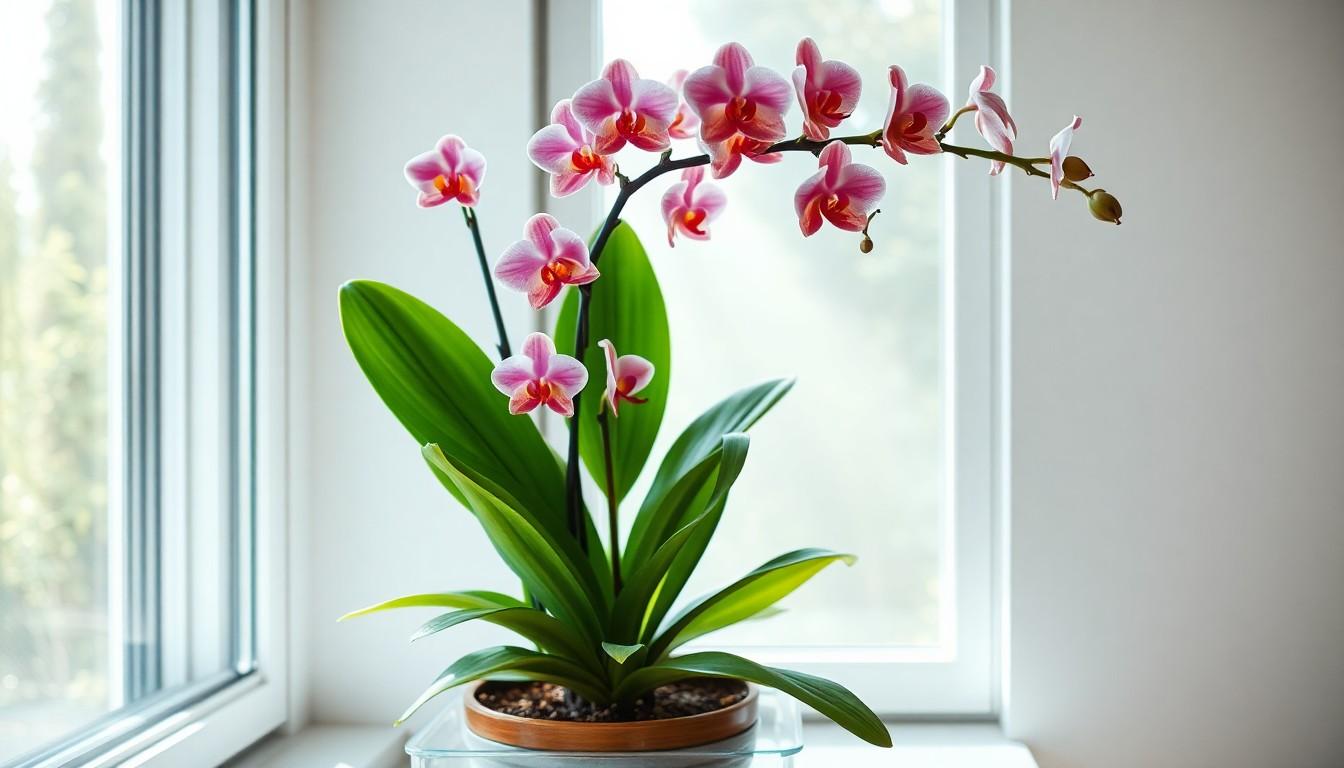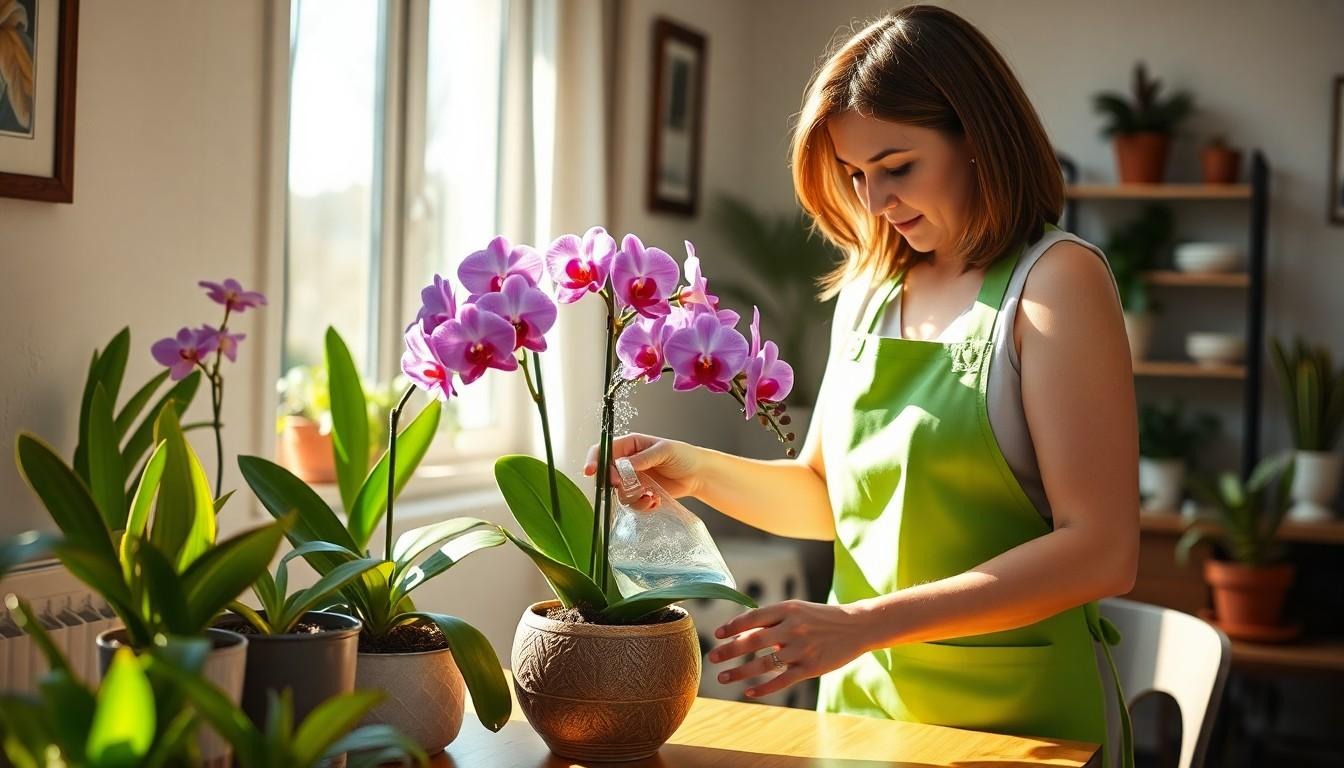Orchids are the divas of the plant world, demanding attention and care like a Hollywood star on a red carpet. But don’t let their reputation intimidate you. With the right tips and a little love, anyone can keep these beauties thriving. Imagine walking into your home and being greeted by a stunning orchid, its vibrant blooms whispering sweet nothings about your gardening prowess.
How To Care for an Orchid Plant
Orchids captivate with their stunning flowers and complex care requirements. Knowing their unique traits can lead to successful cultivation.
Orchid Varieties for Beginners
Phalaenopsis orchids suit beginners due to their forgiving nature. Cattleya orchids provide vibrant blooms and vibrant colors. Dendrobium orchids flourish well in various conditions, making them adaptable. Oncidium orchids, often known as dancing ladies, charm with their unique shapes. Each type offers a unique beauty and manageable care, creating a perfect entry point for novice growers.
Common Misconceptions
Many believe orchids demand constant attention, but proper care ensures they thrive with minimal effort. Another myth claims orchids only grow well in special soil mixes. In reality, they can flourish in a variety of substrates, including bark or moss. Some think orchids only bloom once a year; however, many types bloom multiple times with the right conditions. Understanding these misconceptions helps foster confidence in potential orchid enthusiasts.
Growing Conditions

Orchids thrive in specific growing conditions that ensure healthy growth and vibrant blooms. Understanding these requirements is essential for successful cultivation.
Light Requirements
Bright, indirect light benefits most orchid varieties. Direct sunlight can scorch their leaves, leading to damage. An east or west-facing window provides optimal conditions. Some orchids, like Phalaenopsis, tolerate lower light levels, while Cattleya prefers more brightness. Adjusting light exposure can enhance blooming potential, so monitoring daily light conditions matters.
Temperature and Humidity
Orchids generally prefer day temperatures between 70°F and 85°F (21°C to 29°C) and night temperatures around 60°F to 70°F (16°C to 21°C). Sudden temperature fluctuations can stress the plant. Humidity levels between 50% and 70% support healthy growth. Methods to increase humidity include using a pebble tray or a humidifier. Ensuring proper air circulation prevents mold or mildew issues.
Watering Techniques
Watering orchids requires careful attention to avoid common pitfalls. Balancing moisture levels is key for these sensitive plants.
Signs of Overwatering
Overwatering can manifest in yellowing leaves. Droopy foliage often indicates excessive moisture, leading to root rot. Roots submerged in water appear dark brown or mushy. Mold may develop on the potting medium, signaling too much water has been retained. When orchids sit in overly wet conditions, they struggle to absorb nutrients, which affects overall health. A quick check for waterlogged roots or soggy potting mix can prevent further issues.
Signs of Underwatering
Underwatering shows in shriveled leaves or a lack of vibrant color. Wrinkled leaves frequently signal that the plant hasn’t received enough moisture. Additionally, dried-out potting media becomes crumbly and loose. Flower spikes may wilt or drop, indicating stress from dehydration. Checking for a dry weight of the pot can help determine if the orchid requires watering. Regular assessments of moisture levels keep orchids thriving and blooming beautifully.
Soil and Fertilization
A well-chosen potting mix and appropriate fertilizers significantly influence orchid health. The right combination ensures lush foliage and vibrant blooms.
Choosing the Right Potting Mix
Selecting a suitable potting mix is essential for orchids. Pine bark, sphagnum moss, and perlite are popular components that provide excellent drainage. Orchids generally prefer a coarse mix that allows air circulation around the roots. This mixture prevents root rot, which often results from excess moisture. Adjustments may be necessary depending on the specific orchid variety. For example, Cattleya enjoys a more fibrous mix, while Phalaenopsis thrives in a moisture-retentive blend.
Best Fertilizers for Orchids
Fertilization is crucial for promoting healthy growth and flowering in orchids. Balanced fertilizers with an N-P-K ratio of 30-10-10 work particularly well. Apply these fertilizers every two to four weeks during the growing season for optimal results. Some growers prefer specialized orchid fertilizers designed to meet their specific nutrient needs. Liquid fertilizers often yield quicker results than granular forms. Consider diluting fertilizer to half-strength to avoid nutrient burn, especially for sensitive varieties.
Common Orchids Problems
Orchids face several problems that can hinder their growth and beauty. Identifying and addressing these issues promptly helps maintain a vibrant plant.
Pests and Diseases
Pests like aphids and mealybugs can infest orchids, causing stress and damage. Disease symptoms include root rot, often indicated by mushy roots or yellowing leaves. Fungal infections may emerge from improper watering, and mildews thrive in high humidity without proper airflow. Regular inspections effectively catch issues early, ensuring better outcomes.
Preventative Measures
Implementing preventative measures significantly enhances orchid health. Regular inspection of leaves and roots helps spot pests early. Maintaining humidity around 50% to 70% reduces fungal growth. Choosing well-draining potting mixes prevents standing water, lowering the risk of root rot. Ensuring proper air circulation also minimizes the chance of mildew. Regularly cleaning leaves keeps pests at bay, promoting overall plant vigor.

